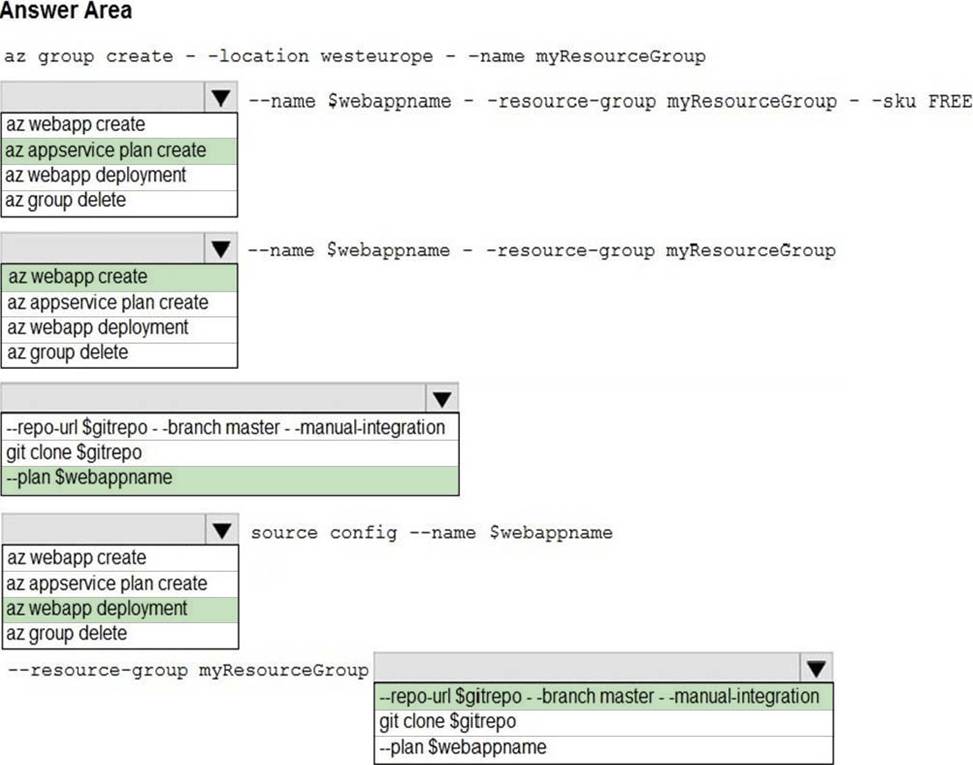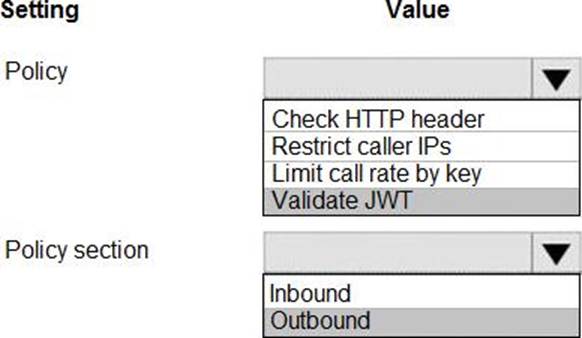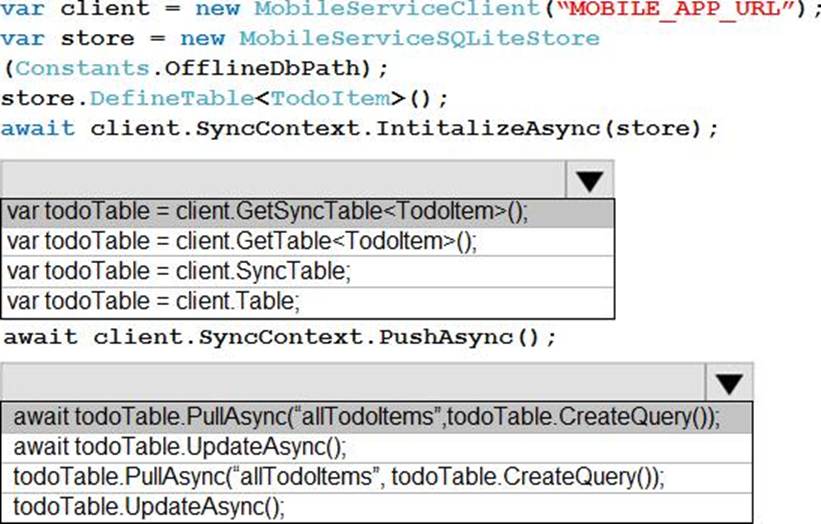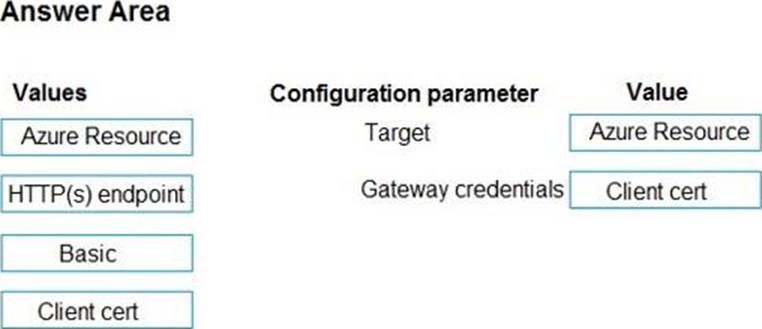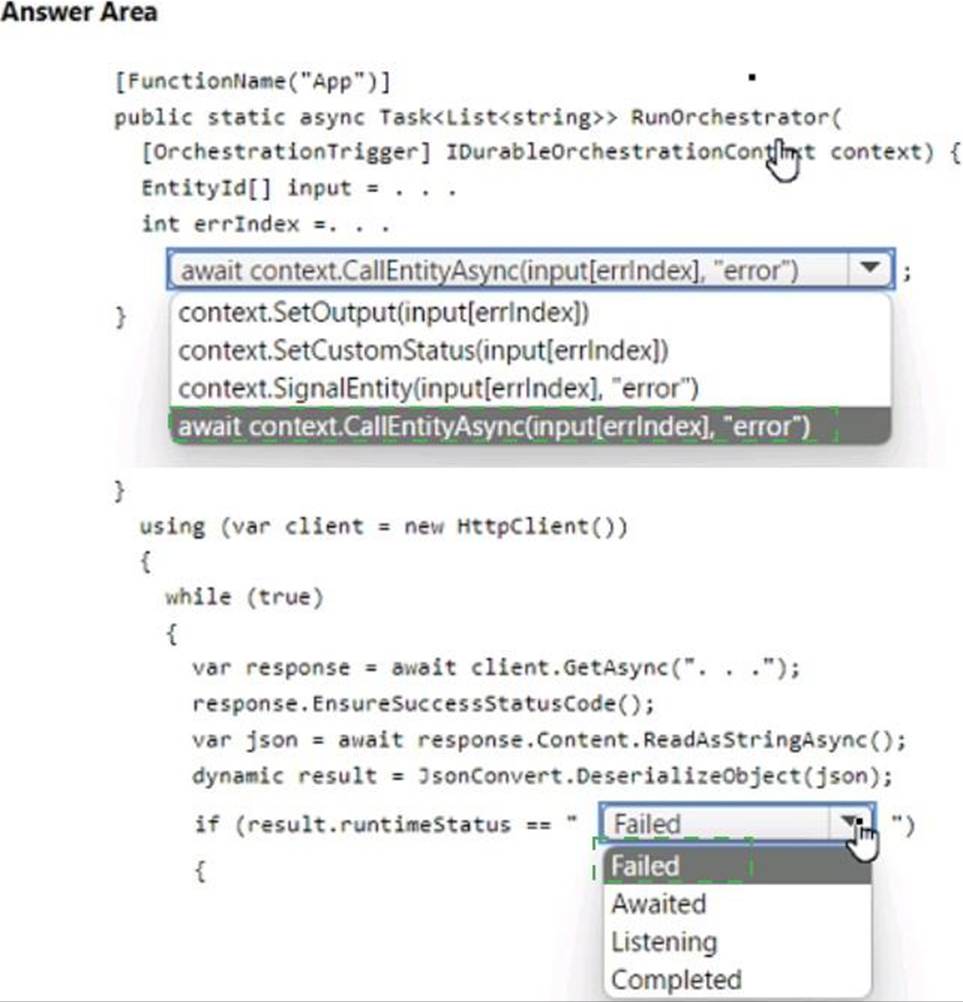Practice Free AZ-204 Exam Online Questions
HOTSPOT
You are creating a CLI script that creates an Azure web app related services in Azure App Service.
The web app uses the following variables:

You need to automatically deploy code from GitHub to the newly created web app.
How should you complete the script? To answer, select the appropriate options in the answer area. NOTE: Each correct selection is worth one point.
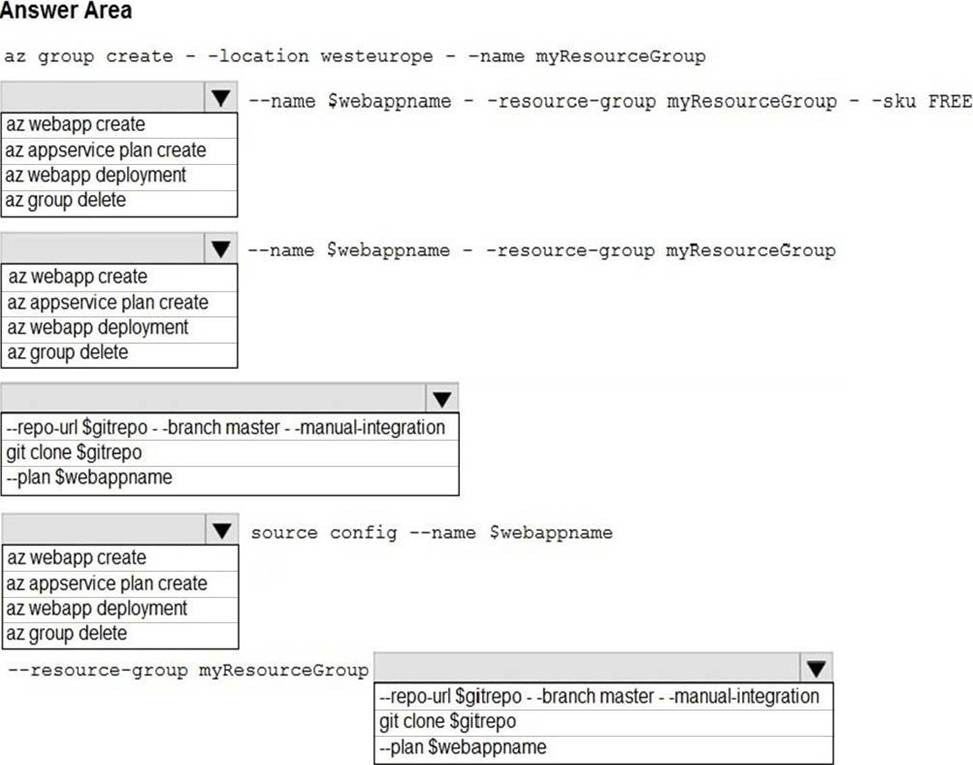
HOTSPOT
You need to configure API Management for authentication.
Which policy values should you use? To answer, select the appropriate options in the answer area. NOTE: Each correct selection is worth one point.
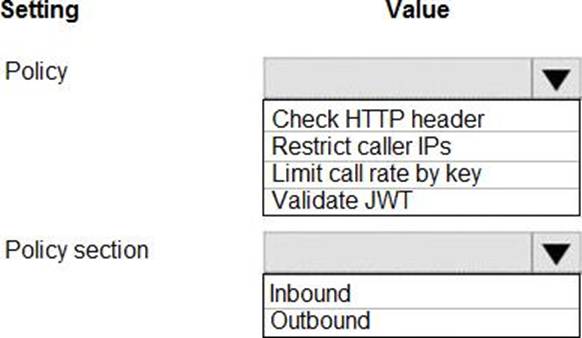
HOTSPOT
A company is developing a mobile app for field service employees using Azure App Service Mobile Apps as the backend.
The company’s network connectivity varies throughout the day. The solution must support offline use and synchronize changes in the background when the app is online app.
You need to implement the solution.
How should you complete the code segment? To answer, select the appropriate options in the answer area. NOTE: Each correct selection is worth one point.
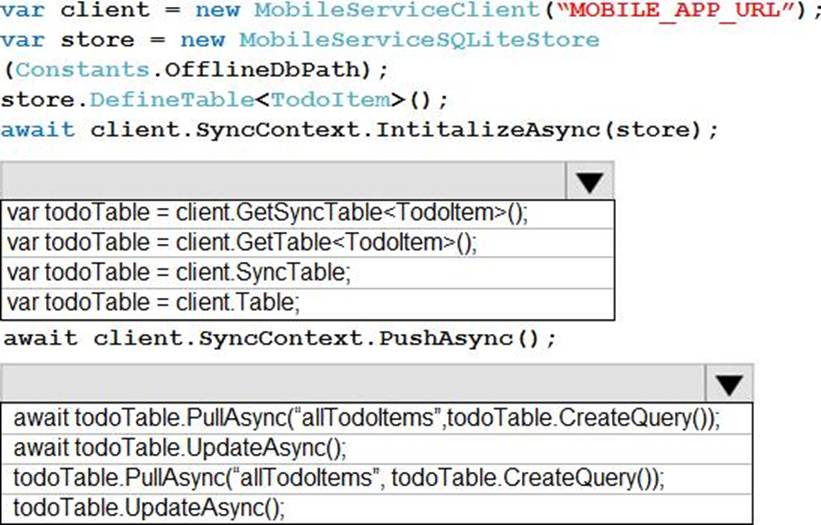
DRAG DROP
You develop a gateway solution for a public facing news API.
The news API back end is implemented as a RESTful sen/ice and hosted in an Azure App Service instance.
You need to configure back-end authentication for the API Management service instance.
Which target and gateway credential type should you use? To answer, drag the appropriate values to the correct parameters. Each value may be used once, more than once, or not at all. You may need to drag the split bar between panes or scroll to view content. NOTE: Each correct selection is worth one point.
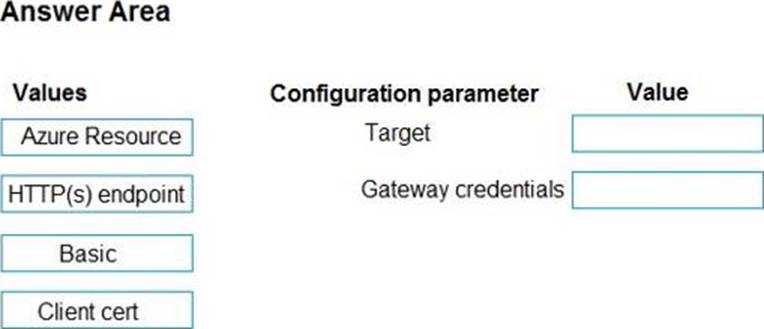
You manage an Azure Key Vault named kv1 of Standard SKU.
You plan to programmatically store in kv1 an asymmetric key pair and use the key pair for encryption and decryption.
You must develop an application named app1 that will access the key pair in kv1.
You need to configure an object to retrieve a key pair from kv1.
Which object should you use?
- A . SecretClient
- B . KeyVaultSettingsClient
- C . CertificateClient
- D . KeyClient
You manage an Azure Key Vault named kv1 of Standard SKU.
You plan to programmatically store in kv1 an asymmetric key pair and use the key pair for encryption and decryption.
You must develop an application named app1 that will access the key pair in kv1.
You need to configure an object to retrieve a key pair from kv1.
Which object should you use?
- A . SecretClient
- B . KeyVaultSettingsClient
- C . CertificateClient
- D . KeyClient
You manage an Azure Key Vault named kv1 of Standard SKU.
You plan to programmatically store in kv1 an asymmetric key pair and use the key pair for encryption and decryption.
You must develop an application named app1 that will access the key pair in kv1.
You need to configure an object to retrieve a key pair from kv1.
Which object should you use?
- A . SecretClient
- B . KeyVaultSettingsClient
- C . CertificateClient
- D . KeyClient
You are a developing a SaaS application that stores data as key value pairs.
You must make multiple editions of the application available. In the lowest cost edition, the performance must be best-effort, and there is no regional failover.
In higher cos! editions customers must be able to select guaranteed performance and support for multiple regions. Azure costs must be minimized.
Which Azure Cosmos OB API should you use for the application?
- A . Core
- B . MongoDB
- C . Cassandra
- D . Table API
HOTSPOT
You are developing an Azure Durable Function based application that processes a list of input values. The application is monitored using a console application that retrieves JSON data from an Azure Function diagnostic endpoint.
During processing a single instance of invalid input does not cause the function to fail. Invalid input must be available to the monitoring application.
You need to implement the Azure Durable Function and the monitoring console application.
How should you complete the code segments? To answer, select the appropriate options in the answer area. NOTE: Each correct selection is worth one point.
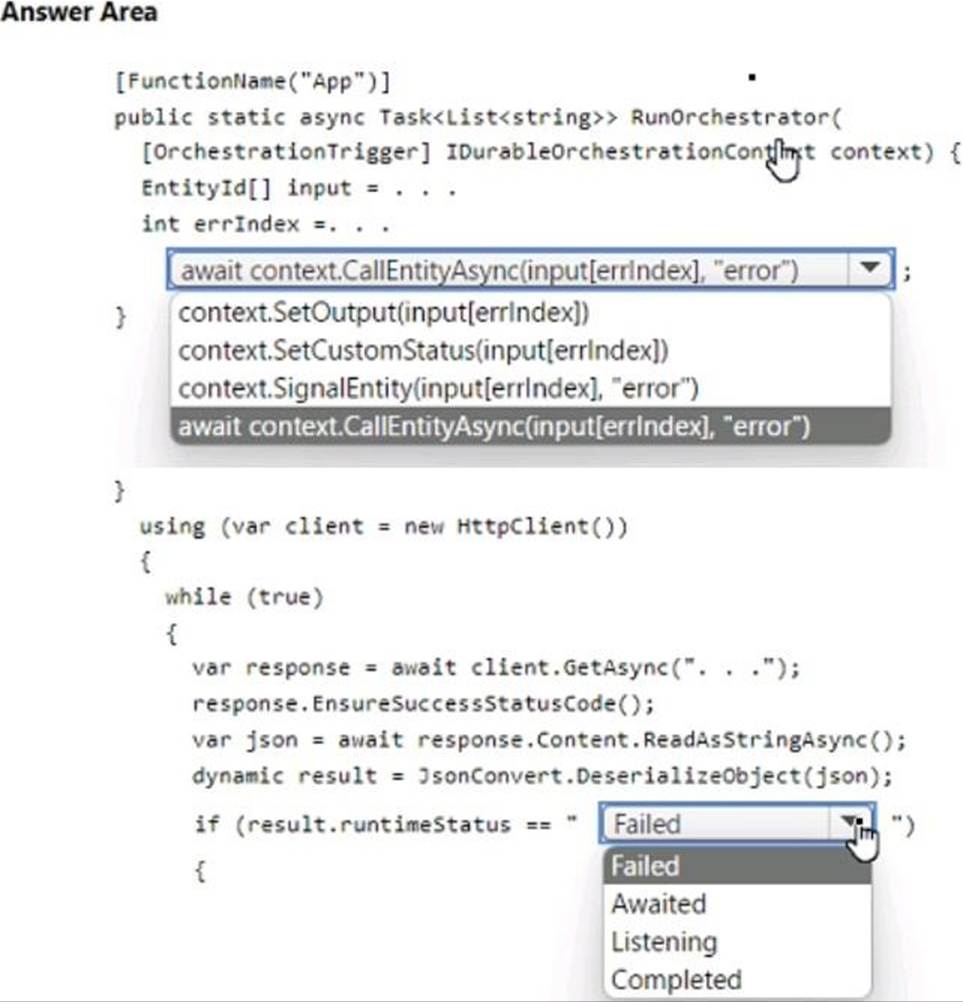
Note: This question is part of a series of questions that present the same scenario. Each question in the series contains a unique solution. Determine whether the solution meets the stated goals.
You are developing and deploying several ASP.Net web applications to Azure App Service. You plan to save session state information and HTML output.
You must use a storage mechanism with the following requirements:
• Share session state across all ASP.NET web applications
• Support controlled, concurrent access to the same session state data for multiple readers and a single writer
• Save full HTTP responses for concurrent requests
You need to store the information.
Proposed Solution: Deploy and configure Azure Cache for Redis. Update the web applications.
Does the solution meet the goal?
- A . Yes
- B . No

